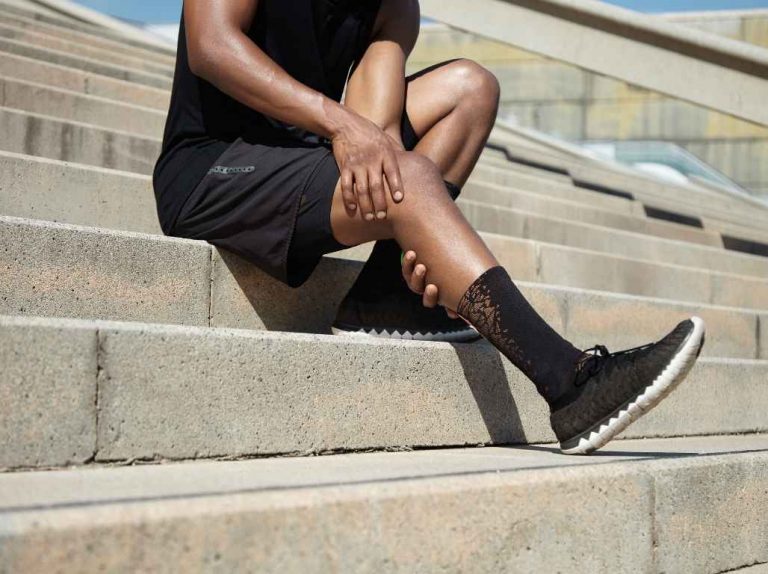Safely Returning to Fitness Following A Sports Injury
Everyone we know has had a sports injury. It’s annoying and painful, and often we try to get back to our workouts too soon. What kind of sports injury have you had? A torn ACL, a broken leg, and a torn achilles are all top contenders for sports injuries that take the longest to heal, according to NBC Sports. Whether you’re an athlete or simply enjoy staying active on a regular basis, getting back to fitness following an injury can be a long and frustrating road. From the length of recovery to how rehabilitation fits in — and tips for doing so safely, here’s what you need to know.
How Long Will It Take To Recover From A Sports Injury
If you have experienced an injury, getting back to your normal exercise routine as soon as possible may be your goal. We feel the urgency. Getting back to the workout is particularly important for those of us who are in recovery from a substance or behavior addiction. Like alcohol, gambling, or drugs. People switch from unhealthy habits to healthier ones. But did you know that even exercise can be an addiction.
Sports Injury Recovery: What To Know
Back to sports injury recovery. It’s important to keep in mind that the timeframe for getting back to your normal workouts depends on on your injury and its severity. That said, Menshealth.com notes that a simple formula may be able to help give you a better idea in determining how long that might be, noting that with two weeks “out of action,” you can likely plan to be back to your peak around the end of a month following the injury.
Tyler Spraul, CSCS and head trainer for Exercise.com says “For getting your cardio / endurance back up, you can expect a challenge that is proportional to the amount of time that you were ‘out’ with your injury.” That said, getting back to your normal fitness routine often involves much more in the meantime, such as a physical therapy (PT) regime.
Sports Injury: When You Need Professional Rehabilitation
If your injury is identified early and is properly addressed, getting back to fitness can be done most effectively through rehabilitation, with two prominent types involving physical therapy and occupational therapy. In terms of the difference between the two, physical therapy focuses on improving mobility, movement, and function through various exercises, stretches, etc., while occupational therapy aids in performing daily tasks more easily and focuses on fine motor skills, according to Healthline.
Although the one you’ll need depends on your needs, the participation in proper rehabilitation following an injury is often essential in the journey to recovery. In addition to helping the healing process and gaining back strength, physical therapy can aid in eliminating pain, and will help you to heal much quicker.
When looking to get back to the gym following an injury, consulting with a medical professional first is imperative in order to ensure you don’t make things worse. That said, your health care provider may suggest making alterations to your current workout routine to make things easier.
For example, if you have a lower body injury — like a knee injury — focusing on your upper body strength while your knee heals properly (and you’re in PT) may be the way to go. Using resistance, or workout bands is just one way to get a good workout while focusing on a specific part of the body, and is generally considered to be a safe and low-impact way to do so. With a variety of different bands available, you’ll be able to choose one that suits your needs.
These may be used in rehabilitating joints and muscles as well following an injury, making them a compact and versatile tool to keep around even after you’ve recovered.
Can You Take It Easy
If you’ve received the green light to head back to the gym following an injury, taking things slowly is imperative in working towards reaching your peak performance again in a safe way. Going to the gym to work on rehabilitation is a great way to get back into things, and making goals can be a fantastic way to stay motivated and on track — especially when considering how easy it can feel to simply stay home instead.
In an article highlighting tips for returning to exercise after injury, Lucy Young writes, “it’s really important to celebrate the small milestones and remind yourself that great achievements are the accumulation of many small steps. I also advocate letting others in on your excitement so they too can help remind you of these accomplishments on the days you may be feeling a little down or sorry for yourself.”
For those with an injury, the need to get back to the gym and perform like before can be overwhelming — especially if your recovery will take a considerable amount of time. However, by following the advice of your healthcare provider and taking things easy (while actively participating in rehabilitation), you’re sure to come back stronger than before.
More to read
Recovery Fitness is More Than Exercise
Health and Wellness Tips For the Season
22 Tips For Sober Life This Summer





















